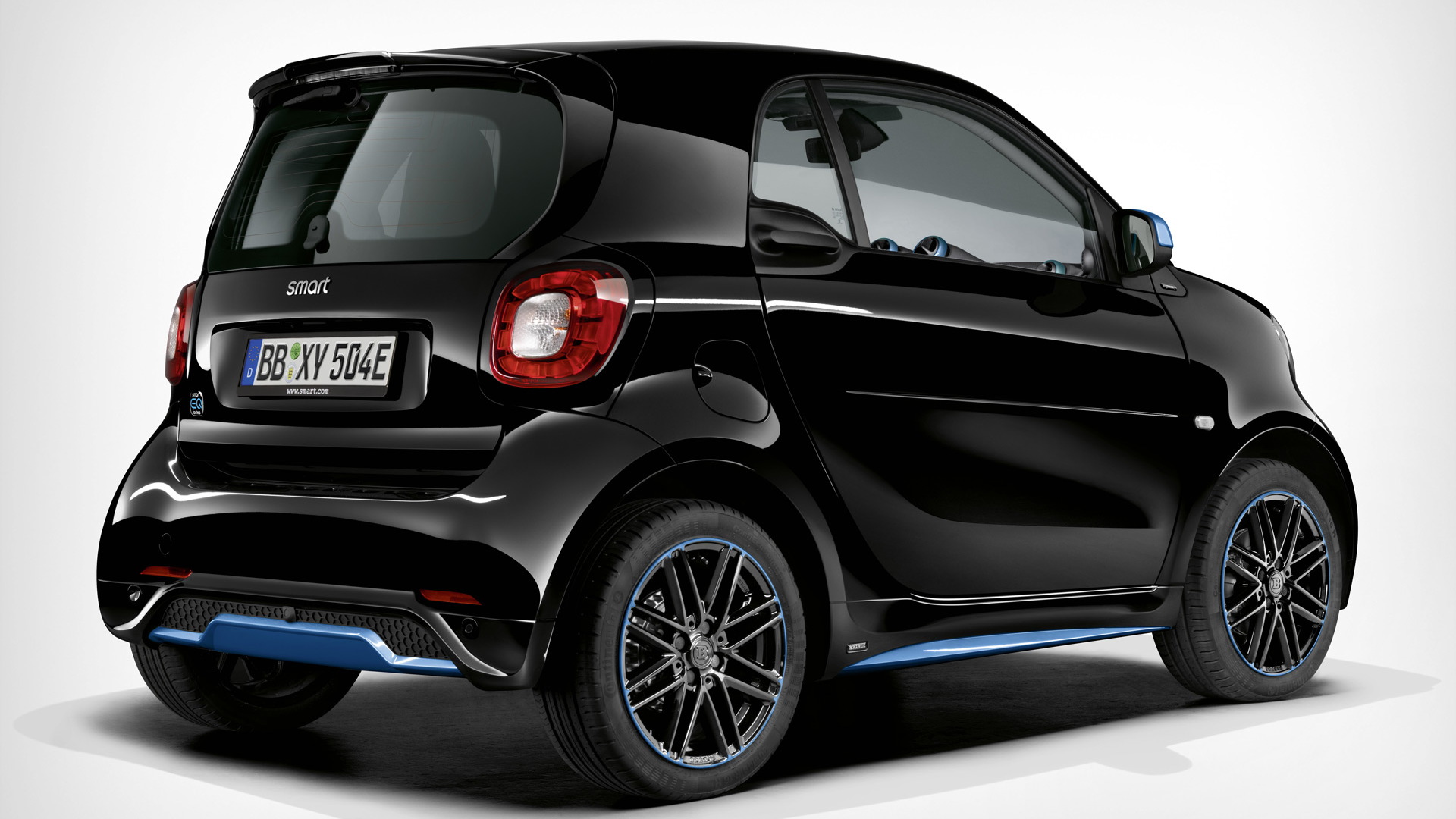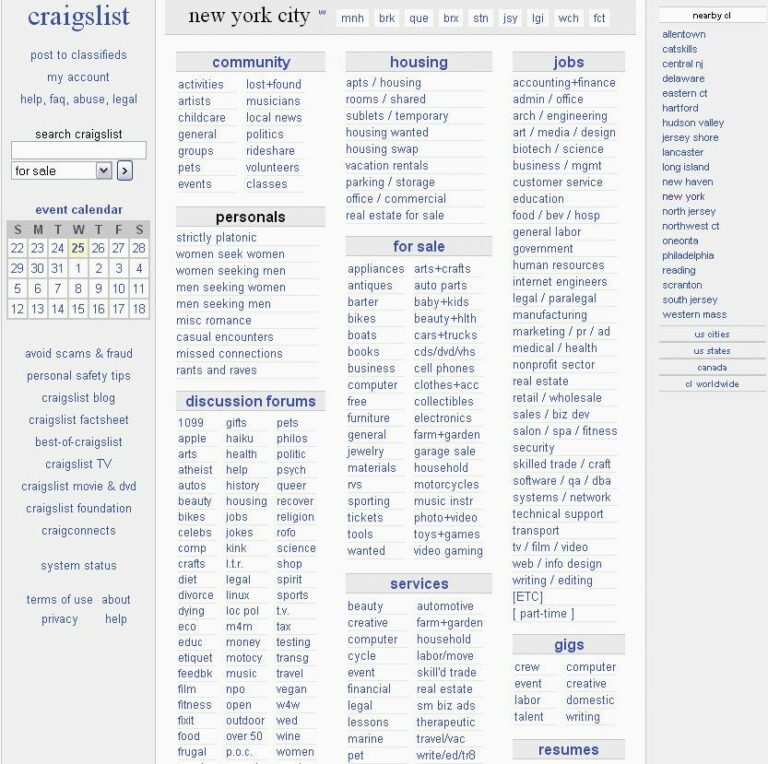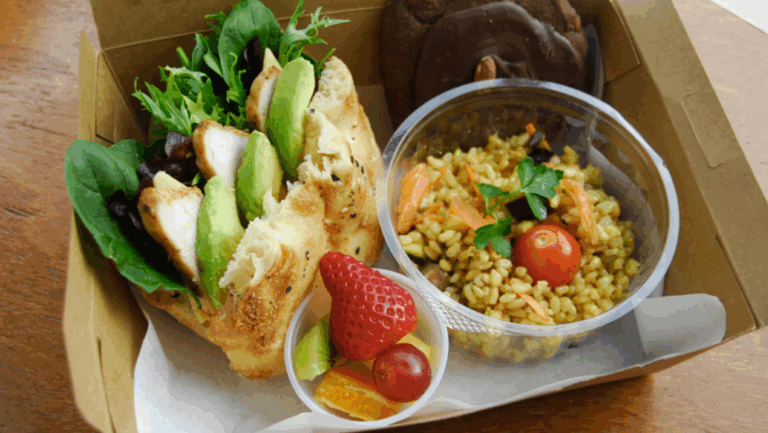The Smart Car Brand: A Comprehensive Guide to Urban Mobility’s Icon
The Smart Car Brand: A Comprehensive Guide to Urban Mobility’s Icon cars.truckstrend.com
In the bustling tapestry of urban life, where space is a premium and efficiency paramount, one automotive brand carved out a unique niche: Smart. More than just a car, Smart represents a philosophy of intelligent urban mobility, challenging the conventional notions of vehicle size, design, and purpose. From its distinctive compact form to its pioneering embrace of electric propulsion, the Smart car brand has consistently stood as a beacon for those seeking nimble, eco-conscious, and stylish transportation solutions tailored for the concrete jungle. This article delves deep into the world of Smart, exploring its origins, evolution, unique characteristics, and its promising future as a leader in electric urban mobility.
1. Introduction: Redefining Urban Mobility
The Smart Car Brand: A Comprehensive Guide to Urban Mobility’s Icon
The Smart car brand, originally a joint venture between Swatch and Mercedes-Benz (now primarily under Mercedes-Benz AG and Geely Holding), emerged in the late 1990s as a revolutionary answer to the growing challenges of urban congestion, parking scarcity, and environmental concerns. Its core concept was radical: create a tiny, two-seater vehicle that was incredibly agile, remarkably fuel-efficient, and surprisingly safe, all while retaining a distinctive, playful aesthetic.
Smart cars were designed from the ground up for city living. Their minuscule footprint allowed for unparalleled parking ease, often fitting into spaces larger cars couldn’t even dream of. Beyond practicality, Smart cultivated an image of cleverness and eco-consciousness, appealing to a demographic that valued intelligent design and sustainable choices. Today, as the world pivots towards electric vehicles, Smart has fully embraced this transition, cementing its relevance as a forward-thinking brand dedicated to a greener, more efficient urban future.
2. The Genesis and Philosophy of Smart
The story of Smart begins not in an automotive design studio, but with Nicolas Hayek, the visionary behind Swatch watches. Hayek envisioned a "Swatchmobile" – a small, affordable, customizable car built with the same modular, mass-production principles as his popular watches. After initial discussions with Volkswagen, Hayek partnered with Daimler-Benz AG (now Mercedes-Benz AG) in 1994, leading to the formation of Micro Compact Car AG, which would later become Smart GmbH.
The brand’s philosophy was encapsulated in its name: "Smart" (Swatch Mercedes ART). It represented:
- Compactness: A radical reduction in size for maximum urban efficiency.
- Safety: Despite its size, innovative engineering to protect occupants.
- Environmental Responsibility: Fuel efficiency and, eventually, zero-emission electric power.
- Individuality: A car that reflected personal style and urban living.

The first production model, the Smart Fortwo (originally Smart City-Coupe), debuted in 1998, immediately captivating attention with its distinctive "Tridion safety cell" – a high-strength steel cage that provided remarkable protection despite the car’s small stature. This innovation shattered the perception that small cars were inherently unsafe.
3. Distinctive Design and Engineering: More Than Meets the Eye

Smart cars are instantly recognizable, primarily due to their unique dimensions and design elements.
- The Tridion Safety Cell: This is the structural backbone of every Smart Fortwo and Forfour. Made of high-strength steel, it forms a rigid, protective cocoon around the occupants. Its contrasting color (often silver or black) against the body panels highlights its importance and becomes a key design feature. This cell is engineered to distribute crash forces around the passenger compartment, providing surprising occupant protection in collisions.
- Interchangeable Body Panels (Early Models): A nod to the Swatch philosophy, early Smart Fortwo models featured easily removable and interchangeable plastic body panels. This allowed owners to quickly change the car’s color, offering unprecedented personalization and simplifying repair after minor bumps. While less prominent in newer models, the spirit of customization remains.
- Rear-Engine, Rear-Wheel Drive (Traditional Models): The Fortwo’s engine was traditionally mounted at the rear, underneath the luggage compartment, driving the rear wheels. This configuration allowed for an incredibly short front end, maximizing cabin space and enabling an astonishingly tight turning circle – often less than 7 meters, making U-turns in narrow streets effortless.
- Electric Propulsion (Current Models): The most significant engineering shift has been the brand’s full transition to electric powertrains. The EQ Fortwo and EQ Forfour utilize electric motors, offering instant torque, silent operation, and zero tailpipe emissions, perfectly aligning with their urban-centric purpose.
- Modern Design Language: While retaining compactness, the new generation of Smart vehicles (like the Smart #1 and #3) developed in partnership with Geely, showcase a more spacious, SUV-like form factor, incorporating advanced technology, digital cockpits, and sophisticated driver-assistance systems while retaining a distinctive, futuristic aesthetic.

4. The Evolution of the Smart Lineup
The Smart brand has seen several models and generations, each adapting to market demands and technological advancements.
-
Smart Fortwo (City-Coupe/City-Cabrio): The iconic two-seater that started it all.
- W450 (1998-2007): The original, known for its unique styling, compact size, and Tridion cell. Offered with small gasoline or diesel engines.
- W451 (2007-2014): A slightly larger, more refined version that offered improved stability and safety. This generation also saw the introduction of the first electric drive models.
- W453 (2014-2019): Developed in collaboration with Renault (sharing platforms with the Twingo), this version offered a more comfortable ride and improved transmission. It was the last generation to offer internal combustion engines (ICE).
- EQ Fortwo (2019-Present): The fully electric version of the W453, marking Smart’s commitment to an all-electric future. It offers urban-focused range and quick charging.
-
Smart Forfour: Attempts to offer a more practical, four-seater option.
- First Generation (W454, 2004-2006): Based on the Mitsubishi Colt platform, it was a more conventional hatchback but struggled to find its market and was discontinued quickly.
- Second Generation (W453, 2014-2019): A reintroduction alongside the Fortwo, sharing much of its platform with the Renault Twingo. This version was also available as an EQ Forfour before being phased out.
-
Niche & Experimental Models:
- Smart Roadster/Roadster-Coupe (2003-2005): A sporty, two-seater roadster that garnered critical acclaim for its handling and fun-to-drive nature but was ultimately unprofitable.
- Smart Crossblade (2002): An extreme, limited-edition model with no roof, doors, or windshield – a true concept car for the road.
-
The New Generation (Post-2020): Following a strategic shift, Smart became a 50:50 joint venture between Mercedes-Benz AG and Zhejiang Geely Holding Group. This partnership has ushered in a new era for the brand, focusing on premium, larger electric vehicles built on Geely’s Sustainable Experience Architecture (SEA).
- Smart #1 (2022-Present): The first model from the new joint venture, a compact electric SUV designed for urban families. It features a modern, tech-rich interior, impressive range, and fast charging capabilities.
- Smart #3 (2023-Present): A sportier, coupé-SUV variant of the #1, further expanding Smart’s portfolio into the growing electric crossover segment.
5. Benefits of Owning a Smart Car
- Unrivaled Urban Maneuverability: The Fortwo’s incredibly tight turning circle and compact dimensions make navigating congested city streets and tight corners a breeze.
- Parking Prowess: Perhaps its most significant advantage, the ability to park a Fortwo in spaces other cars can’t fit (including perpendicular parking in some areas) is a game-changer for city dwellers.
- Zero Emissions (EV Models): With the current lineup being fully electric, Smart vehicles contribute to cleaner urban air and reduced noise pollution.
- Low Running Costs: Electric Smart cars benefit from lower "fuel" costs (electricity often cheaper than gasoline), reduced maintenance due to fewer moving parts, and often qualify for government incentives and lower road taxes.
- Surprisingly Spacious Interior (for its size): Despite the exterior dimensions, the Fortwo’s cabin is surprisingly airy and comfortable for two adults, thanks to clever packaging.
- Safety: The Tridion safety cell, combined with modern airbags and safety features, provides a high level of passive safety.
- Unique Style and Brand Image: Smart cars stand out. They convey a sense of individuality, environmental consciousness, and urban sophistication.
6. Important Considerations and Challenges
While Smart cars offer many benefits, they also come with specific considerations:
- Limited Passenger and Cargo Space (Fortwo): This is the most obvious limitation. The Fortwo is strictly a two-seater with minimal cargo space, making it unsuitable for families or those needing to carry significant luggage. The #1 and #3 address this.
- Range Anxiety (EQ Fortwo/Forfour): The earlier EQ models, designed primarily for urban commuting, have a relatively modest range (around 100-130 km real-world). This requires careful planning for longer trips, though the newer #1 and #3 offer significantly improved ranges.
- Highway Performance (Older ICE Fortwo): While capable of highway speeds, the older ICE Fortwo models, particularly with their automated manual transmission, could feel strained and less stable at higher velocities. This is less of an issue with the smoother, more powerful electric drivetrains.
- Charging Infrastructure (EVs): Owning an EV requires access to charging. While public infrastructure is growing, home charging is ideal.
- Price (New Models): The newer, more premium Smart #1 and #3 models, while offering advanced features and space, come with a higher price tag than the traditional Fortwo.
- Brand Perception: Some consumers may still view Smart as a niche, "toy" car rather than a full-fledged automotive solution, though the new models aim to change this.
7. Buying and Maintaining a Smart Car: Practical Advice
- Assess Your Needs: Are you a city dweller needing a primary vehicle for commuting and errands, or a family looking for a secondary city car? The Fortwo is perfect for the former, while the #1 or #3 might suit the latter.
- EV or Older ICE?: If buying used, decide if you prefer the simplicity and urban efficiency of an EV or the flexibility of an older gasoline model. For new cars, only EVs are available.
- Test Drive Both: Experience the tight turning circle, the acceleration of the EV, and the comfort of the cabin. Pay attention to visibility and the infotainment system.
- Charging Habits (for EVs): Understand your daily driving needs and charging options (home charger, workplace charging, public stations).
- Maintenance: Smart cars, especially EVs, generally have lower maintenance needs than traditional cars. Regular checks of tires, brakes, fluids (for ICE), and battery health (for EVs) are crucial. For EVs, ensure software updates are performed.
- Aftermarket Support: Being part of the Mercedes-Benz family, Smart generally benefits from good parts availability and dealer support, although specialized Smart workshops also exist.
8. The Future of Smart: Electric, Connected, and Global
The future of the Smart brand is decidedly electric and expansive. The partnership with Geely has injected significant capital and manufacturing prowess, allowing Smart to develop a new generation of vehicles that retain its core urban philosophy while addressing previous limitations.
The Smart #1 and #3 are just the beginning, signaling a move into larger, more versatile segments that will appeal to a broader global audience. These vehicles are designed to be highly connected, offering advanced infotainment, over-the-air updates, and sophisticated driver assistance systems. Smart aims to be a leading player in the premium electric vehicle market, particularly in urban and suburban environments. Its evolution from a quirky microcar to a lineup of technologically advanced electric SUVs demonstrates its adaptability and commitment to staying relevant in a rapidly changing automotive landscape.
9. Smart Car Brand Price Table (Estimated, as of Late 2023 / Early 2024)
Prices can vary significantly based on region, trim level, optional features, and government incentives. The table below provides estimated starting prices for current and recent models.
| Model / Variant | Type | Seating | Powertrain | Range (WLTP/Estimated Real-world) | Est. Starting Price (USD / EUR) | Key Features |
| :————– | :— | :—— | :——— | :——————————– | :—————————— | :——————————————————————————————————————————————————————————————————————————————————————————————————————————————————————————————————————————————————————————————————————————————————————————————————————————————————————————————————————————————————————————————————————————————————————————————————————————————————————————————————————————————————————————————————————————————————————————————————————————————————————————————————————————————————————————————————————————————————————————————————————————————————————————————————————————————————————————————————————————————————————————————————————————————————————————————————————————————————————————————————————————————————————————————————————————————————————————————————————————————————————————————————————————————————————————————————————————————————————————————————————————————————————————————————————————————————————————————————————————————————————————————————————————————————————————————————————————————————————————————————————————————————————————————————————————————————————————————————————————————————————————————————————————————————————————————————————————————————————————————————————————————————————————————————————————————————————————————————————————————————————————————————————————————————————————————————————————————————————————————————————————————————————————————————————————————————————————————————————————————————————————————————————————————————————————————————————————————————————————————————————————————————————————————————————————————————————————————————————————————————————————————————————————————————————————————————————————————————————————————————————————————————————————————————————————————————————————————————————————————————————————————————————————————————————————————————————————————————————————————————————————————————————————————————————————————————————————————————————————————————————————————————————————————————————————————————————————————————————————————————————————————————————————————————————————————————————————————————————————————————————————————————————————————————————————————————————————————————————————————————————————————————————————————————————————————————————————————————————————————————————————————————————————————————————————————————————————————————————————————————————————————————————————————————————————————————————————————————————————————————————————————————————————————————————————————————————————————————————————————————————————————————————————————————————————————————————————————————————————————————————————————————————————————————————————————————————————————————————————————————————————————————————————————————————————————————————————————————————————————————————————————————————————————————————————————————————————————————————————————————————————————————————————————————————————————————————————————————————————————————————————————————————————————————————————————————————————————————————————————————————————————————————————————————————————————————————————————————————————————————————————————————————————————————————————————————————————————————————————————————————————————————————————————————————————————————————————————————————————————————————————————————————————————————————————————————————————————————————————————————————————————————————————————————————————————————————————————————————————————————————————————————————————————————————————————————————————————————————————————————————————————————————————————————————————————————————————————————————————————————————————————————————————————————————————————————————————————————————————————————————————————————————————————————————————————————————————————————————————————————————————————————————————————————————————————————————————————————————————————————————————————————————————————————————————————————————————————————————————————————————————————————————————————————————————————————————————————————————————————————————————————————————————————————————————————————————————————————————————————————————————————————————————————————————————————————————————————————————————————————————————————————————————————————————————————————————————————————————————————————————————————————————————————————————————————————————————————————————————————————————————————————————————————————————————————————————————————————————————————————————————————————————————————————————————————————————————————————————————————————————————————————————————————————————————————————————————————————————————————————————————————————————————————————————————————————————————————————————————————————————————————————————————————————————————————————————————————————————————————————————————————————————————————————————————————————————————————————————————————————————————————————————————————————————————————————————————————————————————————————————————————————————————————————————————————————————————————————————————————————————————————————————————————————————————————————————————————————————————————————————————————————————————————————————————————————————————————————————————————————————————————————————————————————————————————————————————————————————————————————————————————————————————————————————————————————————————————————————————————————————————————————————————————————————————————————————————————————————————————————————————————————————————————————————————————————————————————————————————————————————————————————————————————————————————————————————————————————————————————————————————————————————————————————————————————————————————————————————————————————————————————————————————————————————————————————————————————————————————————————————————————————————————————————————————————————————————————————————————————————————————————————————————————————————————————————————————————————————————————————————————————————————————————————————————————————————————————————————————————————————————————————————————————————————————————————————————————————————————————————————————————————————————————————————————————————————————————————————————————————————————————————————————————————————————————————————————————————————————————————————————————————————————————————————————————————————————————————————————————————————————————————————————————————————————————————————————————————————————————————————————————————————————————————————————————————————————————————————————————————————————————————————————————————————————————————————————————————————————————————————————————————————————————————————————————————————————————————————————————————————————————————————————————————————————————————————————————————————————————————————————————————————————————————————————————————————————————————————————————————————————————————————————————————————————————————————————————————————————————————————————————————————————————————————————————————————————————————————————————————————————————————————————————————————————————————————————————————————————————————————————————————————————————————————————————————————————————————————————————————————————————————————————————————————————————————————————————————————————————————————————————————————————————————————————————————————————————————————————————————————————————————————————————————————————————————————————————————————————————————————————————————————————————————————————————————————————————————————————————————————————————————————————————————————————————————————————————————————————————————————————————————————————————————————————————————————————————————————————————————————————————————————————————————————————————————————————————————————————————————————————————————————————————————————————————————————————————————————————————————————————————————————————————————————————————————————————————————————————————————————————————————————————————————————————————————————————————————————————————————————————————————————————————————————————————————————————————————————————————————————————————————————————————————————————————————————————————————————————————————————————————————————————————————————————————————————————————————————————————————————————————————————————————————————————————————————————————————————————————————————————————————————————————————————————————————————————————————————————————————————————————————————————————————————————————————————————————————————————————————————————————————————————————————————————————————————————————————————————————————————————————————————————————————————————————————————————————————————————————————————————————————————————————————————————————————————————————————————————————————————————————————————————————————————————————————————————————————————————————————————————————————————————————————————————————————————————————————————————————————————————————————————————————————————————————————————————————————————————————————————————————————————————————————————————————————————————————————————————————————————————————————————————————————————————————————————————————————————————————————————————————————————————————————————————————————————————————————————————————————————————————————————————————————————————————————————————————————————————————————————————————————————————————————————————————————————————————————————————————————————————————————————————————————————————————————————————————————————————————————————————————————————————————————————————————————————————————————————————————————————————————————————————————————————————————————————————————————————————————————————————————————————————————————————————————————————————————————————————————————————————————————————————————————————————————————————————————————————————————————————————————————————————————————————————————————————————————————————————————————————————————————————————————————————————————————————————————————————————————————————————————————————————————————————————————————————————————————————————————————————————————————————————————————————————————————————————————————————————————————————————————————————————————————————————————————————————————————————————————————————————————————————————————————————————————————————————————————————————————————————————————————————————————————————————————————————————————————————————————————————————————————————————————————————————————————————————————————————————————————————————————————————————————————————————————————————————————————————————————————————————————————————————————————————————————————————————————————————————————————————————————————————————————————————————————————————————————————————————————————————————————————————————————————————————————————————————————————————————————————————————————————————————————————————————————————————————————————————————————————————————————————————————————————————————————————————————————————————————————————————————————————————————————————————————————————————————————————————————————————————————————————————————————————————————————————————————————————————————————————————————————————————————————————————————————————————————————————————————————————————————————————————————————————————————————————————————————————————————————————————————————————————————————————————————————————————————————————————————————————————————————————————————————————————————————————————————————————————————————————————————————————————————————————————————————————————————————————————————————————————————————————————————————————————————————————————————————————————————————————————————————————————————————————————————————————————————————————————————————————————————————————————————————————————————————————————————————————————————————————————————————————————————————————————————————————————————————————————————————————————————————————————————————————————————————————————————————————————————————————————————————————————————————————————————————————————————————————————————————————————————————————————————————————————————————————————————————————————————————————————————————————————————————————————————————————————————————————————————————————————————————————————————————————————————————————————————————————————————————————————————————————————————————————————————————————————————————————————————————————————————————————————————————————————————————————————————————————————————————————————————————————————————————————————————————————————————————————————————————————————————————————————————————————————————————————————————————————————————————————————————————————————————————————————————————————————————————————————————————————————————————————————————————————————————————————————————————————————————————————————————————————————————————————————————————————————————————————————————————————————————————————————————————————————————————————————————————————————————————————————————————————————————————————————————————————————————————————————————————————————————————————————————————————————————————————————————————————————————————————————————————————————————————————————————————————————————————————————————————————————————————————————————————————————————————————————————————————————————————————————————————————————————————————————————————————————————————————————————————————————————————————————————————————————————————————————————————————————————————————————————————————————————————————————————————————————————————————————————————————————————————————————————————————————————————————————————————————————————————————————————————————————————————————————————————————————————————————————————————————————————————————————————————————————————————————————————————————————————————————————————————————————————————————————————————————————————————————————————————————————————————————————————————————————————————————————————————————————————————————————————————————————————————————————————————————————————————————————————————————————————————————————————————————————————————————————————————————————————————————————————————————————————————————————————————————————————————————————————————————————————————————————————————————————————————————————————————————————————————————————————————————————————————————————————————————————————————————————————————————————————————————————————————————————————————————————————————————————————————————————————————————————————————————————————————————————————————————————————————————————————————————————————————————————————————————————————————————————————————————————————————————————————————————————————————————————————————————————————————————————————————————————————————————————————————————————————————————————————————————————————————————————————————————————————————————————————————————————————————————————————————————————————————————————————————————————————————————————————————————————————————————————————————————————————————————————————————————————————————————————————————————————————————————————————————————————————————————————————————————————————————————————————————————————————————————————————————————————————————————————————————————————————————————————————————————————————————————————————————————————————————————————————————————————————————————————————————————————————————————————————————————————————————————————————————————————————————————————————————————————————————————————————————————————————————————————————————————————————————————————————————————————————————————————————————————————————————————————————————————————————————————————————————————————————————————————————————————————————————————————————————————————————————————————————————————————————————————————————————————————————————————————————————————————————————————————————————————————————————————————————————————————————————————————————————————————————————————————————————————————————————————————————————————————————————————————————————————————————————————————————————————————————————————————————————————————————————————————————————————————————————————————————————————————————————————————————————————————————————————————————————————————————————————————————————————————————————————————————– Smart Car Brand: A Comprehensive Guide to Urban Mobility’s Icon
In the bustling tapestry of urban life, where space is a premium and efficiency paramount, one automotive brand carved out a unique niche: Smart. More than just a car, Smart represents a philosophy of intelligent urban mobility, challenging the conventional notions of vehicle size, design, and purpose. From its distinctive compact form to its pioneering embrace of electric propulsion, the Smart car brand has consistently stood as a beacon for those seeking nimble, eco-conscious, and stylish transportation solutions tailored for the concrete jungle. This article delves deep into the world of Smart, exploring its origins, evolution, unique characteristics, and its promising future as a leader in electric urban mobility.
1. Introduction: Redefining Urban Mobility
The Smart car brand, originally a joint venture between Swatch and Mercedes-Benz (now primarily under Mercedes-Benz AG and Geely Holding), emerged in the late 1990s as a revolutionary answer to the growing challenges of urban congestion, parking scarcity, and environmental concerns. Its core concept was radical: create a tiny, two-seater vehicle that was incredibly agile, remarkably fuel-efficient, and surprisingly safe, all while retaining a distinctive, playful aesthetic.
Smart cars were designed from the ground up for city living. Their minuscule footprint allowed for unparalleled parking ease, often fitting into spaces larger cars couldn’t even dream of. Beyond practicality, Smart cultivated an image of cleverness and eco-consciousness, appealing to a demographic that valued intelligent design and sustainable choices. Today, as the world pivots towards electric vehicles, Smart has fully embraced this transition, cementing its relevance as a forward-thinking brand dedicated to a greener, more efficient urban future.
2. The Genesis and Philosophy of Smart
The story of Smart begins not in an automotive design studio, but with Nicolas Hayek, the visionary behind Swatch watches. Hayek envisioned a "Swatchmobile" – a small, affordable, customizable car built with the same modular, mass-production principles as his popular watches. After initial discussions with Volkswagen, Hayek partnered with Daimler-Benz AG (now Mercedes-Benz AG) in 1994, leading to the formation of Micro Compact Car AG, which would later become Smart GmbH.
The brand’s philosophy was encapsulated in its name: "Smart" (Swatch Mercedes ART). It represented:
- Compactness: A radical reduction in size for maximum urban efficiency.
- Safety: Despite its size, innovative engineering to protect occupants.
- Environmental Responsibility: Fuel efficiency and, eventually, zero-emission electric power.
- Individuality: A car that reflected personal style and urban living.
The first production model, the Smart Fortwo (originally Smart City-Coupe), debuted in 1998, immediately captivating attention with its distinctive "Tridion safety cell" – a high-strength steel cage that provided remarkable protection despite the car’s small stature. This innovation shattered the perception that small cars were inherently unsafe.
3. Distinctive Design and Engineering: More Than Meets the Eye
Smart cars are instantly recognizable, primarily due to their unique dimensions and design elements.
- The Tridion Safety Cell: This is the structural backbone of every Smart Fortwo and Forfour. Made of high-strength steel, it forms a rigid, protective cocoon around the occupants. Its contrasting color (often silver or black) against the body panels highlights its importance and becomes a key design feature. This cell is engineered to distribute crash forces around the passenger compartment, providing surprising occupant protection in collisions.
- Interchangeable Body Panels (Early Models): A nod to the Swatch philosophy, early Smart Fortwo models featured easily removable and interchangeable plastic body panels. This allowed owners to quickly change the car’s color, offering unprecedented personalization and simplifying repair after minor bumps. While less prominent in newer models, the spirit of customization remains.
- Rear-Engine, Rear-Wheel Drive (Traditional Models): The Fortwo’s engine was traditionally mounted at the rear, underneath the luggage compartment, driving the rear wheels. This configuration allowed for an incredibly short front end, maximizing cabin space and enabling an astonishingly tight turning circle – often less than 7 meters, making U-turns in narrow streets effortless.
- Electric Propulsion (Current Models): The most significant engineering shift has been the brand’s full transition to electric powertrains. The EQ Fortwo and EQ Forfour utilize electric motors, offering instant torque, silent operation, and zero tailpipe emissions, perfectly aligning with their urban-centric purpose.
- Modern Design Language: While retaining compactness, the new generation of Smart vehicles (like the Smart #1 and #3) developed in partnership with Geely, showcase a more spacious, SUV-like form factor, incorporating advanced technology, digital cockpits, and sophisticated driver-assistance systems while retaining a distinctive, futuristic aesthetic.
4. The Evolution of the Smart Lineup
The Smart brand has seen several models and generations, each adapting to market demands and technological advancements.
-
Smart Fortwo (City-Coupe/City-Cabrio): The iconic two-seater that started it all.
- W450 (1998-2007): The original, known for its unique styling, compact size, and Tridion cell. Offered with small gasoline or diesel engines.
- W451 (2007-2014): A slightly larger, more refined version that offered improved stability and safety. This generation also saw the introduction of the first electric drive models.
- W453 (2014-2019): Developed in collaboration with Renault (sharing platforms with the Twingo), this version offered a more comfortable ride and improved transmission. It was the last generation to offer internal combustion engines (ICE).
- EQ Fortwo (2019-Present): The fully electric version of the W453, marking Smart’s commitment to an all-electric future. It offers urban-focused range and quick charging.
-
Smart Forfour: Attempts to offer a more practical, four-seater option.
- First Generation (W454, 2004-2006): Based on the Mitsubishi Colt platform, it was a more conventional hatchback but struggled to find its market and was discontinued quickly.
- Second Generation (W453, 2014-2019): A reintroduction alongside the Fortwo, sharing much of its platform with the






